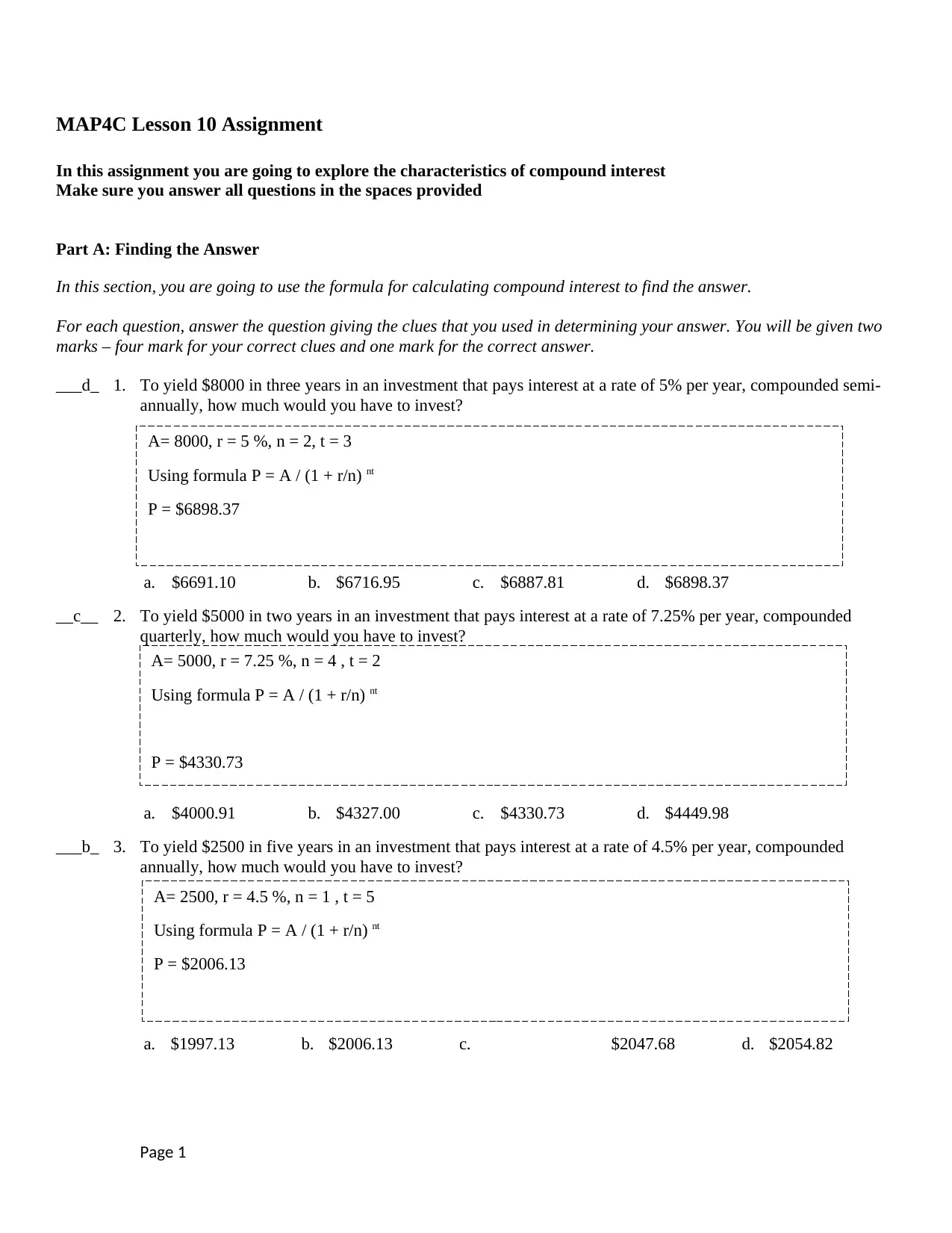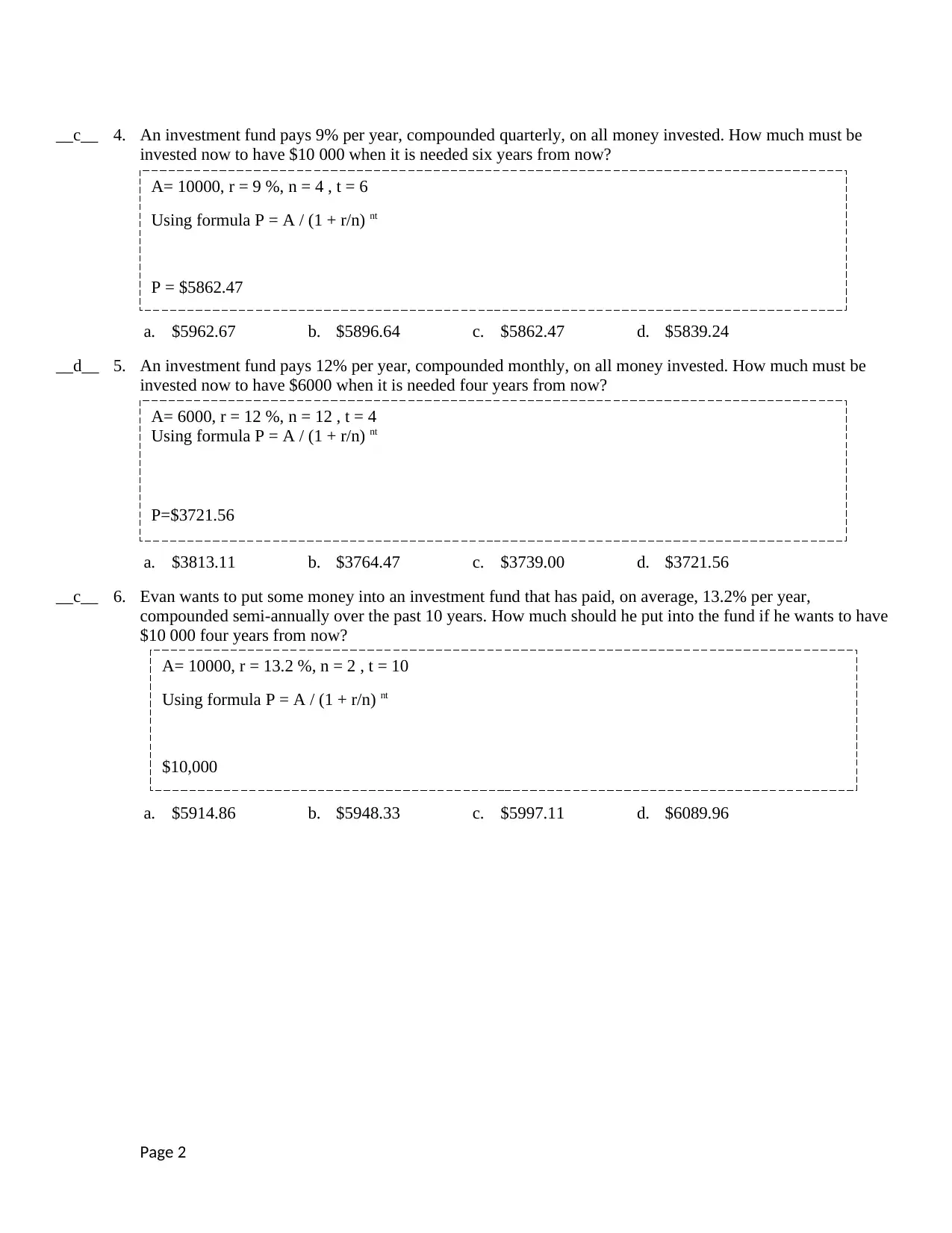MAP4C - Grade 12 Math: Lesson 10 Assignment on Compound Interest
VerifiedAdded on 2022/09/08
|3
|799
|15
Homework Assignment
AI Summary
This document presents the solutions for the MAP4C Lesson 10 assignment, focusing on compound interest calculations. The assignment requires students to utilize the compound interest formula to determine the principal needed to achieve a specific future value, considering different compounding periods such as semi-annually, quarterly, annually, and monthly. The solutions include the application of the formula, identification of the given values (A, r, n, t), and the correct answers for each multiple-choice question. The assignment covers various scenarios, including investments with different interest rates and time periods, providing a comprehensive understanding of compound interest principles. The student provides the correct clues and answers for each question, demonstrating a clear understanding of how to calculate the principal required for an investment to reach a target amount within a specified timeframe. The solution demonstrates the use of the compound interest formula and the correct application of the values to arrive at the accurate answers.
1 out of 3










![[object Object]](/_next/static/media/star-bottom.7253800d.svg)